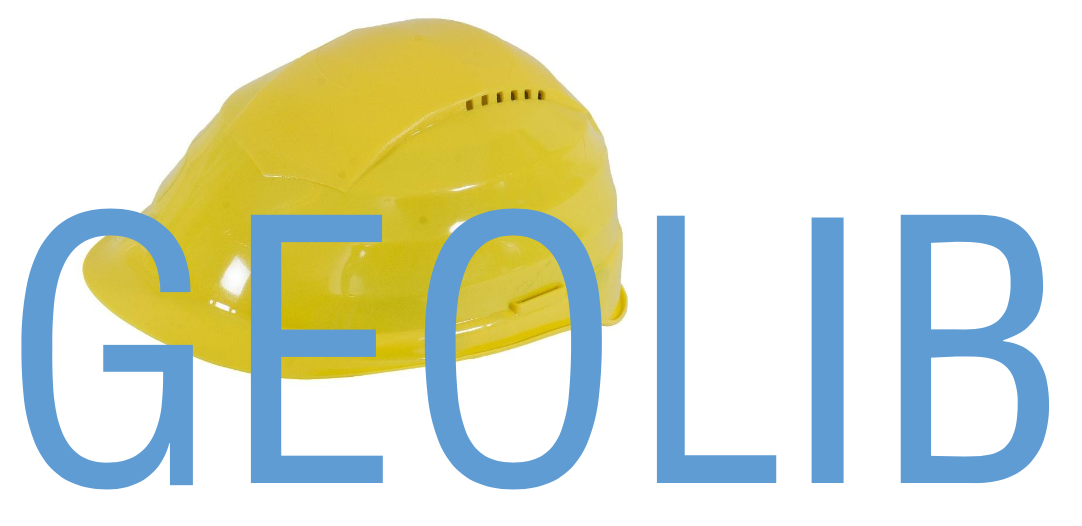Contributing¶
This part of the documentation covers the main components of GEOLib, including the external packages used with an explanation, so users know how to extend the GEOLib package.
Structure¶
- The structure of the GEOLib package follows common patterns:
docs for the documentation
geolib for the source of the package
tests for all test related code
The structure of the geolib folder itself is still in flux, but the overall structure is as follows:
geometry for generic geometry classes and related functions
soils for generic soils and related functions
models for (abstract) base classes related to models and all related classes such as parsers, serializers and validators
models/model for the implementation of above
Naming of files should be readable, in such a way that if you’re looking for a class you should be able to find the relevant Python file from browsing the directory tree alone.
Testing¶
When developing a new feature it’s a good practice to start with a simple test script that documents how you should use the new feature. The test will fail in the beginning because nothing is implemented or linked yet, but should be fixed in the end. This is also the simplest way of navigating a large complex package, instead of trying to get everything running in a separate script.
The test package we’re using is pytest: https://docs.pytest.org/en/latest/. You can find the tests in the tests folder. For each model there’s a subfolder. When you need data, such as input files in your tests, you can put these in the test_data subfolder. These files are checked in using Git LFS.
When testing user facing functions (the public API) that take simple types such as strings or integers, it’s good to also use Hypothesis: https://hypothesis.readthedocs.io/en/latest/quickstart.html in your tests. Instead of testing with one string of your own making, hypothesis will generate many strings, including empty ones for you.
Documenting¶
We use Sphinx and thus reStructuredText .rst files to write our documentation. It is good to read the basics about reStructuredText: https://www.sphinx-doc.org/en/master/usage/restructuredtext/basics.html.
Always write docstrings for your classes, methods or functions. These docstrings are used automatically in the documentation. Many IDEs support generating a docstring on the fly. We use the Google style of docstrings:
def func(arg1: int, arg2: str) -> bool:
"""Summary line.
Extended description of function.
Args:
arg1: Description of arg1
arg2: Description of arg2
Returns:
Description of return value
"""
return True
You can find the Sphinx documentation about this style here: https://www.sphinx-doc.org/en/master/usage/extensions/napoleon.html
To document usages or examples, the docstring of a class is often not the right place. You can place these examples at the top of the module, like this for the dstability_model.py.
"""
Usage::
>>> dstab = DStabilityModel.parse("test.stix")
>>> dstab.execute()
>>> dstab.output
<dict>
"""
import abc
This will automatically show up in the documentation if the whole module is imported in the docs.
Inheritance¶
GEOLib makes extensive use of inheritance. In the geolib/models folder there are several Python files that provide BaseModels, BaseParsers, etc. This enables common behaviour and greatly reduces the amount of duplicate code, but can be confusing at first. An example, not all methods are defined on their children; you can execute a DSettlementModel, but the execute method is only defined on the BaseModel and is thus the same of all derived Models.
We often inherit BaseModel (many times renamed as DataClass to distinguish it from our own BaseModel) from Pydantic: https://pydantic-docs.helpmanual.io/ Pydantic combines the power of dataclasses (new in Python 3.7) with type hints and gives us way less boilerplate and free validation on instantiation:
from datetime import datetime
from pydantic import BaseModel
class User(BaseModel):
id: int
name = 'John Doe'
signup_ts: datetime | None = None
friends: list[int] = []
Note how in the above example we need no __init__ method like a dataclass. We can define types and defaults for fields. We can even constrain fields (specifying a range of valid options for a field) using only types: https://pydantic-docs.helpmanual.io/usage/types/#constrained-types Construction can be from dict and json, and vica versa. This is what we use for the internal dataclasses for each model.
Type hinting¶
GEOLib uses type hinting in all its classes and functions. This is partly used for automatic validation on initialization for classes by pydantic, but it’s meant for overall readability. Annotating your code with type hints reduces the amount of bugs by improving readability and enabling the use of static code checkers such as mypy, which we also use.
If the type of variables in a function is unclear in the current context we advise to also add type hints. An example:
def some_function(a: int) -> int:
b: int = result_with_unknown_type_from_other_function()
return a * b
Adding requirements¶
New requirements can be added using Poetry: https://python-poetry.org/docs/ For example, adding a new package:
$ poetry add new_package
It’s good to keep the requirements.txt up to date, so afterwards run:
$ poetry install
$ poetry export -E server -f requirements.txt --output requirements.txt --without-hashes
$ poetry export -E server -f requirements.txt --output requirements-dev.txt --with dev --without-hashes
